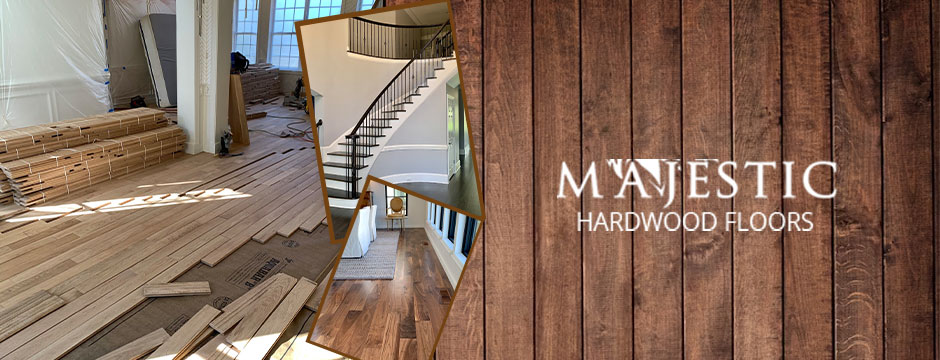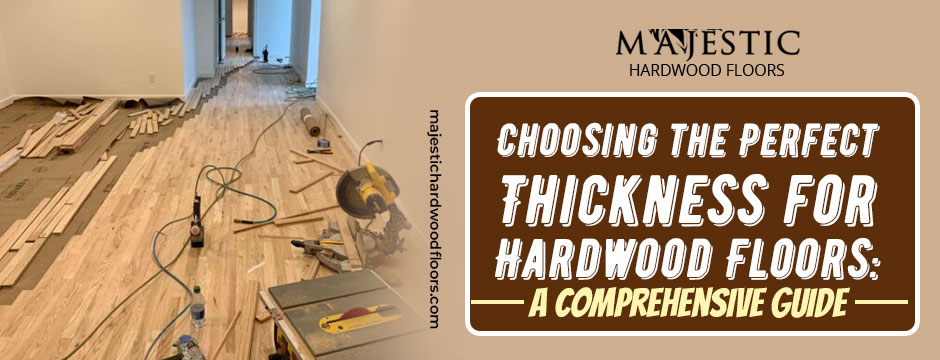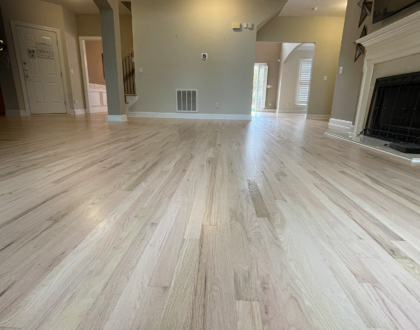Choosing the Perfect Thickness for Hardwood Floors: A Comprehensive Guide

Hardwood floors are not just a functional element in a home; they are a timeless and aesthetically pleasing investment that can significantly enhance the overall appeal of your living space. One crucial factor to consider when deciding on hardwood flooring is the thickness of the planks. The thickness of hardwood floors plays a pivotal role in durability, stability, and the overall look and feel of your flooring. In this comprehensive guide, we’ll delve into the various aspects of hardwood floor thickness to help you make an informed decision.
Understanding the Significance of Hardwood Floor Thickness: A Detailed Exploration
Hardwood flooring, renowned for its timeless beauty and durability, comes in various thicknesses, measured in inches or millimeters. The decision regarding the thickness of your hardwood planks is a crucial one, influenced by factors such as subfloor conditions, installation methods, and personal preferences. Let’s delve deeper into the nuances of hardwood floor thickness and its impact on durability, stability, installation, and aesthetics.
1. Durability and Stability:
Thin Planks (5/16 inch – 3/8 inch):
These slender planks find their niche in areas with lower foot traffic and stable subfloors. Particularly popular in renovation projects where existing floor height is a concern, thin planks may, however, exhibit more susceptibility to wear and are less suitable for high-traffic zones.
Standard Thickness (1/2 inch):
At 1/2 inch, these planks strike a delicate balance between durability and cost-effectiveness. Ideal for most residential spaces, they offer stability and are less prone to cupping or warping when compared to their thinner counterparts.
Thick Planks (3/4 inch):
Offering a robust solution, thicker planks excel in durability and stability. Their resilience makes them a preferred choice for high-traffic areas and commercial spaces. However, it’s essential to note that they might come with a higher price tag and demand a sturdier subfloor.

2. Installation Methods:
Thin Planks:
Suited for floating floor installations or glue-down methods, thin hardwood planks cater to areas with height restrictions or a need for flexible installation. Their adaptability makes them a practical choice for diverse settings.
Standard and Thick Planks:
The tried-and-true nail-down method is commonly employed for standard and thick planks. The thicker the plank, the more secure and stable the installation tends to be. This method ensures that the planks can withstand the force of nailing without compromising their structural integrity.
3. Aesthetic Considerations:
Thin Planks:
Beyond functionality, thin planks contribute to a contemporary and sleek aesthetic. They are an excellent fit for modern interiors and smaller spaces where a sense of openness is desired.
Standard and Thick Planks:
Versatility takes center stage with standard and thick planks, as they seamlessly adapt to various design styles. From traditional to rustic, these planks offer a substantial and timeless aesthetic that can elevate the visual appeal of any space.
Conclusion:
Choosing the right thickness for your hardwood floors involves considering factors like durability, stability, installation methods, and aesthetic preferences. While thin planks may be suitable for some situations, standard (1/2 inch) and thick (3/4 inch) planks are generally preferred for their balance of performance and longevity. Before making a decision, it’s essential to assess your specific needs, the condition of your subfloor, and the expected foot traffic in the area. By carefully considering these factors, you can ensure that your hardwood floors not only look stunning but also stand the test of time.
Recommended Posts

Hardwood floor colors: Know The Trends For 2025
March 12, 2025


